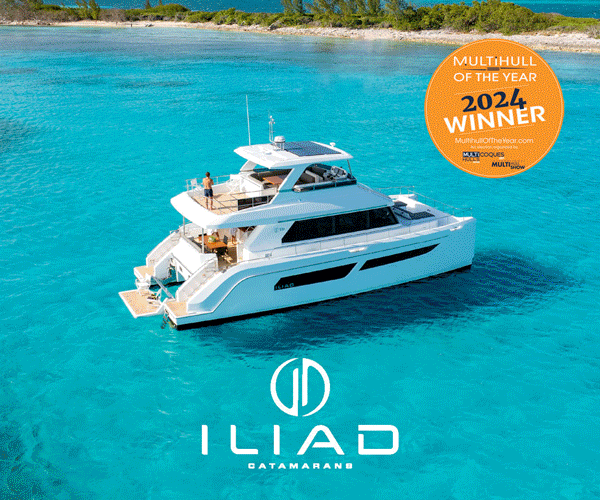Gold rush
The Gold Coast is one crucial step closer to realising the lucrative Cruise Ship Terminal, securing Federal Government approval for its oceanside concept.
Written by Jeni Bone
Photography by Gold Coast City Council
20 May 2017
Hoping to lure the growing global cruise ship fleet to its sunny shores, Gold Coast Council has formalised plans for a $100 million pontoon off the beach near Sea World, catering to vessels of all sizes.
The offshore model has cleared its biggest hurdle with federal environmental approval, confirmed by the Hon Stuart Robert MP, Federal Member for Fadden on the Gold Coast, at the inaugural Superyacht Rendezvous, Friday 19 May at Gold Coast City Marina.
The terminal would allow ships to berth off the coast for several days, providing refuelling and passenger facilities for a planned 150 cruise ship visits a year.
The approval sets out several conditions the council must follow to avoid impacting on threatened and migratory species in the area, including humpback whales, dugongs and several varieties of turtles.
Underwater piling for the cruise ship terminal could only begin if none of the animals were sited within the construction area for half an hour before work and were not likely to enter the area.
Work must shut down “as soon as possible” if any of the listed species enter the shutdown zone. The approval also specifies all vessels working on the project must take steps to avoid hitting dolphins, dugongs and whales.
Along with cruise ships, the structure could receive superyachts and military vessels, a lucrative source of income that currently flows to Brisbane and Auckland.
City leaders are keen to tap into the $40 billion cruise market.
A submission for proposal, referred to the federal environment department, also includes facilities for refuelling, customs and immigration making it fit for use as an origin and destination for 150 cruise ships a year.
Tourism and business leaders say the proposed 1.2km jetty off Philip Park would provide one of the world’s most stunning backdrops, with views of the city’s 42km of beach.
The global and Australian cruise sectors have enjoyed significant increases in demand over the past decade, and expansion is forecast to continue. Australia is well positioned to access this anticipated growth due to its counter seasonal climate patterns relative to the major northern hemisphere cruise locations.
Australia has a reputation as a safe location with a variety of things to see and do which appeals to a broad range of cruising passengers. In its submission, Council states that consultation with the cruise ship industry in 2012 indicated strong potential demand for a cruise ship terminal on the Gold Coast, with the potential to grow Queensland and regional tourism.
The submission, funded under the council’s budgeted $865,000 feasibility study, includes two diagrams of the project, plus a 141-page report of Matters of National Significance for the project, to be built across the road from the proposed $3 billion ASF casino resort.
The study findings, including a business case recommending an option, will be reported back to the council for consideration in May. The next step is pitching it to the Queensland government, a process that is likely to take longer than the 11 months until the 2018 Commonwealth Games.
Instead, the project is considered one solution to the “Games Hangover” frequently experienced by Host Cities in the wake of major international events, and an ideal means of attracting tourism and investment to the region.
The plan would create a cruise ship terminal the equal of Sydney’s Darling Harbour, and vastly superior to any other facilities in the country in terms of potential passenger movements.
Mega ships can carry more than 6000 passengers, meaning there is potential for more than 10,000 visitors to descend on the Gold Coast at once, generating a tourism windfall worth billions of dollars a year.
The ships would be sheltered by a breakwall and would dock facing eastwards, a move made after extensive consultation with cruise ship captains and port designers.
The plan still has to pass numerous government approvals, but momentum is building as cruising continues its charge as tourism’s fastest-growing juggernaut.
Gold Coast Mayor Tom Tate said having a facility capable of hosting two of the world’s biggest ocean liners at once would be an enormous boost for the City’s economy.
“Our oceanside design eclipses anything seen before in the southern hemisphere,” he said.
“Imagine a naval vessel … and mega cruise liner docked at the same time. That will result in millions of dollars into our economy every visit.”
Plans are also well-advanced for a mega cruise ship terminal near the mouth of the Brisbane River.
To succeed, the Gold Coast CST would have to meet the conditions of nine Federal and 12 State Acts.
Mayor Tate is a staunch advocate of the CST and sees the oceanway alternative as the viable option. He said he is confident of government approval and support, dependent on “ticking all the environmental boxes”.
Projects on The Spit, Main Beach and the Broadwater are hugely emotive, eliciting support from the business community and strong opposition from groups such as Gecko and Save our Spit.












